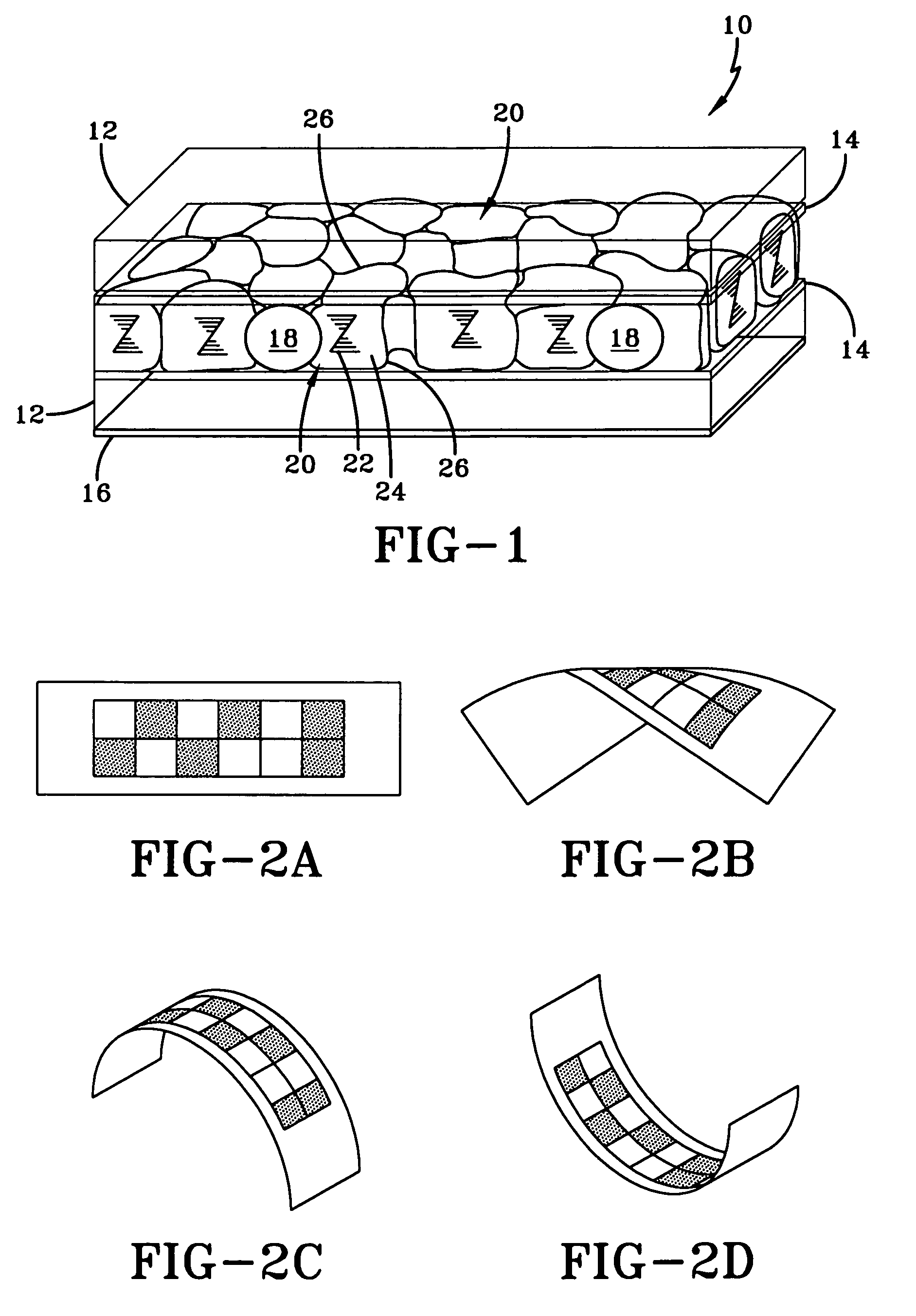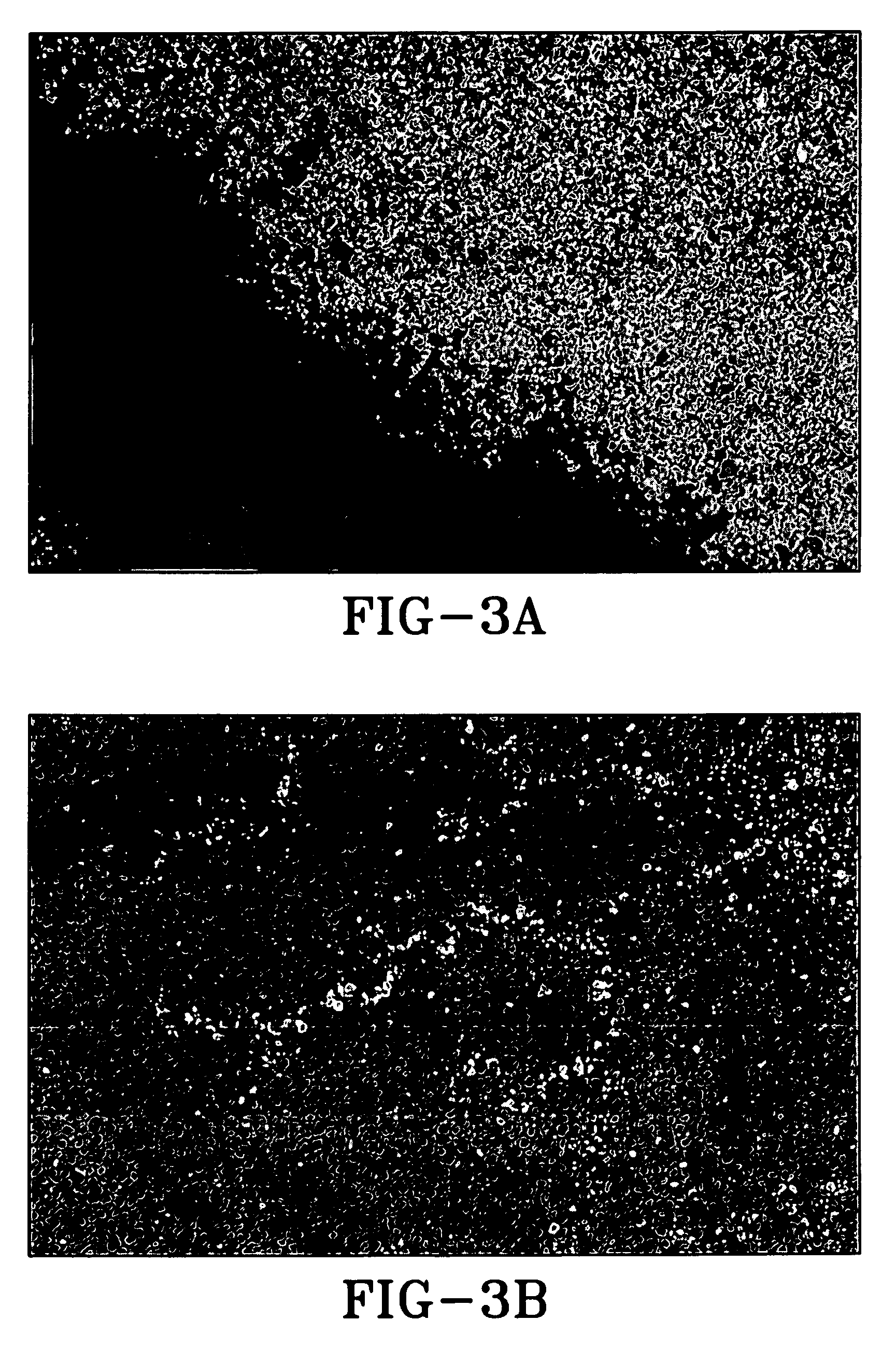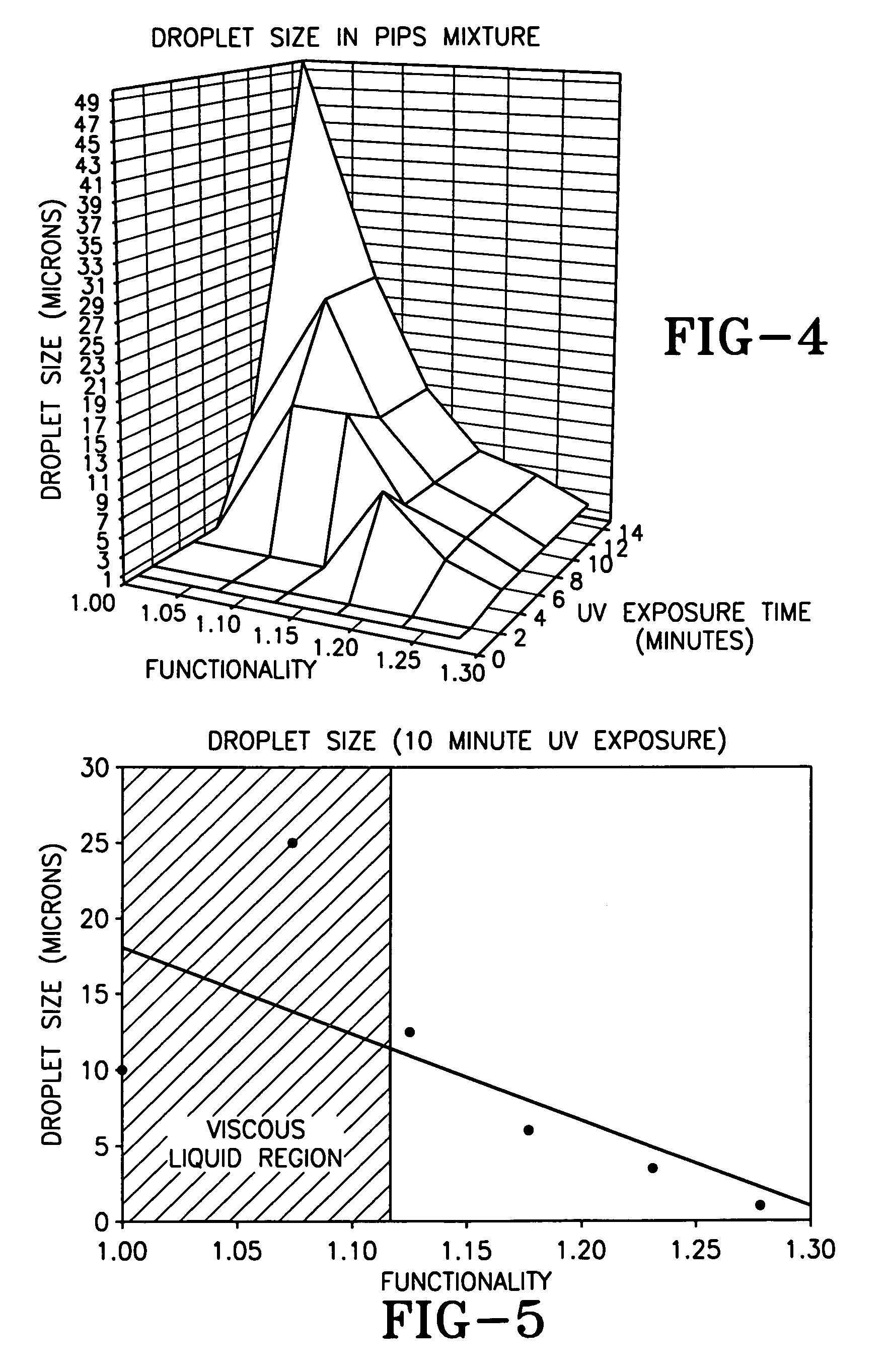Polymerization-encapsulated cholesteric liquid crystal for bistable reflective displays
a liquid crystal display and polymerization technology, applied in the field of liquid crystal displays, can solve the problems of significant challenges pressure points remain significant problems, and the lack of flexibility and durability is significant in the manufacture of lcds
- Summary
- Abstract
- Description
- Claims
- Application Information
AI Technical Summary
Problems solved by technology
Method used
Image
Examples
example 1
[0057]An operable cholesteric layer was fabricated between two indium-zinc oxide (IZO)-patterned 127 μm polycarbonate sheets using droplet dispersions by the PIPS method. The F=1.153 prepolymer mixture was composed of 90.5% of ethyl methacrylate [Aldrich, CAS#: 97-63-2], 7.5% trimethylol propane triacrylate [Aldrich, CAS#: 15625-89-5], and 2% of Irgacure 651 [Ciba Specialty Chemicals, CAS#: 24650-42-8]. Solutions of pre-polymer were vortex-mixed and then added to the liquid crystal, KLC19. KLC19 is a right-handed cholesteric liquid crystal mixture consisting of MDA-01-1955 [EMD] at 79% wt. and MDA-00-3506 [EMD] at 21% wt. for a reflective peak at ˜570 nm. The prepolymer (PP) was added to KLC19 (LC) at a ratio of PP:LC=20:80% wt. Once this was vortex-mixed, 4.5 μm plastic spherical spacers were added to the mixture to preserve substrate spacing before polymerization. The system was mixed again via ultrasonic agitation (to suspend the spacers) and then pipetted between two polycarbona...
example 2
[0058]An operable cholesteric layer was fabricated between two IZO-patterned 127 μm polycarbonate sheets using droplet dispersions by the PIPS method. The F=1.153 prepolymer mixture was composed of 90.5% of ethyl methacrylate [Aldrich, CAS#: 97-63-2], 7.5% trimethylol propane triacrylate [Aldrich, CAS#: 15625-89-5], and 2% of Irgacure 651 [Ciba Specialty Chemicals, CAS#: 24650-42-8]. Solutions of pre-polymer were vortex-mixed and then added to the liquid crystal, KLC19. KLC19 is a right-handed cholesteric liquid crystal mixture consisting of MDA-01-1955 [EMD] at 79% wt. and MDA-00-3506 [EMD] at 21% wt. for a reflective peak at ˜570 nm. The prepolymer (PP) was added to KLC19 (LC) at a ratio of PP:LC=25:75% wt. Once this was vortex-mixed, 6.5 μm plastic spherical spacers were added to the mixture to preserve substrate spacing before polymerization. The system was mixed again via ultrasonic agitation (to suspend the spacers) and then pipetted between two polycarbonate substrates coated...
example 3
[0059]An operable cholesteric PIPS layer was created by filling an ITO-patterned glass cell with a pre-polymer and LC solution and polymerizing. The prepolymer mixture was composed of 90.5% of ethyl methacrylate [Aldrich, CAS#: 97-63-2], 7.5% trimethylol propane triacrylate [Aldrich, CAS#: 15625-89-5], and 2% of Irgacure 651 [Ciba Specialty Chemicals, CAS#: 24650-42-8]. Solutions of pre-polymer were vortex-mixed and then added to the liquid crystal, KLC19. KLC19 is a right-handed cholesteric liquid crystal mixture consisting of MDA-01-1955 [EMD] at 79% wt. and MDA-00-3506 [EMD] at 21% wt. for a reflective peak at ˜570 nm. The prepolymer (PP) was added to KLC19 (LC) at a ratio of PP:LC=20:80% wt. A 5 μm 240×30 ITO pixel glass Infosign© cell was pre-assembled with an open gap on one edge. The cell was placed in a vacuum and pumped down to an atmospheric pressure of 20 μm of Mercury. At vacuum, the open end of the cell was immersed in a trough of KLC19 and began to fill by capillary fo...
PUM
| Property | Measurement | Unit |
|---|---|---|
| glass transition temperature | aaaaa | aaaaa |
| glass transition temperature | aaaaa | aaaaa |
| glass transition temperature | aaaaa | aaaaa |
Abstract
Description
Claims
Application Information
 Login to View More
Login to View More - R&D
- Intellectual Property
- Life Sciences
- Materials
- Tech Scout
- Unparalleled Data Quality
- Higher Quality Content
- 60% Fewer Hallucinations
Browse by: Latest US Patents, China's latest patents, Technical Efficacy Thesaurus, Application Domain, Technology Topic, Popular Technical Reports.
© 2025 PatSnap. All rights reserved.Legal|Privacy policy|Modern Slavery Act Transparency Statement|Sitemap|About US| Contact US: help@patsnap.com



